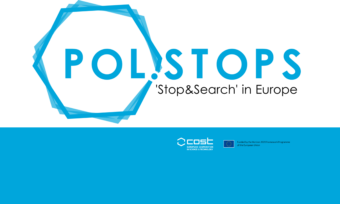The contributions of order-maintenance policing and broken windows theory to New York City’s remarkable crime decline have been the subject of contentious debate. The dominant policing tactic in New York since the 1990s has been aggressive interdiction of citizens through street encounters in the search for weapons or drugs. Research showed that minority citizens in the 1990s were disproportionately stopped, frisked and searched at rates significantly higher than would be predicted by their race-specific crime rates, and that this excess enforcement was explained by the social structure of predominantly minority neighborhoods than by either their disorder or their crime rates. In the decade since the first study on OMP, stop rates have increased by 500 percent while crime rates have remained low and stable. In this article, we update and extend research on order maintenance policing in New York City to explain temporal and spatial patterns of police stops of citizens from 1999 to 2006. We estimate stop rates by neighborhood as a function of local crime rates, neighborhood demography and social structure, and physical disorder, including direct measures of broken windows. We report that the sharp increase in stop activity since 1999 is concentrated in predominantly poor and minority neighborhoods, and that these stops continue to be more closely tied to demographic and socioeconomic conditions than to disorder or crime. Moreover, we show that the efficiency of stops in producing arrests has declined over a decade as stops have increased, and that the decline is greatest in predominantly minority neighborhoods where stop activity is highest. We then compare the probabilities of police stops for young adults by race and ethnicity, to show the extraordinary concentration of stops of minorities. Absent reliable evidence that these tactics are either efficient or effective crime reduction measures, we attribute the excess stops to institutional management concerns, such as productivity and supervision or intelligence gathering, at the expense of the City’s minority citizens. The racial-spatial concentration of excess stop activity threatens to undermine police legitimacy and diminish the social good of policing, while doing little to reduce crime or disorder.
Latest News
International conference POLICE STOPS ACROSS EUROPE (28 February 2023, The Hague, The Netherlands)
News
For more than four years, our EU COST funded network on Police Stops has been gathering information, hearing from experts…
Read moreWorkshop 'Registration of police stops and ethnicity and defining the police stop' 31 Aug - 2 Sept 2022
News
In line with our project’s ambition to share learning and explore the issue police stops across Europe, we are organising…
Read moreCfP European Journal of Policing Studies - Special Issue: The Dynamics of Police Stops
News
European Journal of Policing Studies Special Issue: The Dynamics of Police Stops Guest editors: Mike Rowe Sofie de Kimpe Vincenzo…
Read morePolstops Newsletter n4 (June 2022)
News
At last, we have been able to meet again. And we can now begin to identify what we have missed…
Read more




